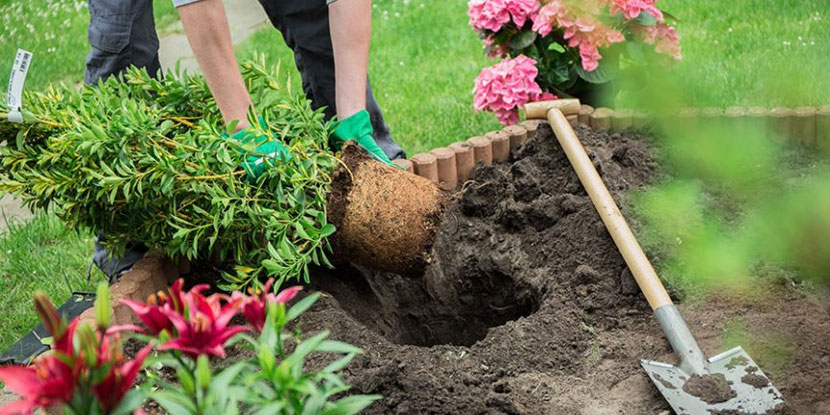
Planting & Removal
Nobody wants to lose their landscape or turf to invasive plants. It happens — vines choking your favorite specimen tree, climbing up the side of the house, or swallowing up smaller shrubs and landscape plantings uninvited. Invasive vegetation can be a problem and we solve problems! Besides the unsightly mess, infestations of rapidly growing plants make weed control difficult and create an environment for pests, like snakes, to move in. One of the biggest culprits is honeysuckle. While it has a beautiful smelling flower, it is also a plant predator that swiftly moves in and chokes out native species, causing erosion. To top that off, it provides very little benefit to wildlife. Another problem is that honeysuckle rapidly reproduces because of the massive amounts of seeds it disperses. Honeysuckle is one of the first plants to leaf out and one of the last to shed leaves. The best time to find and remove honeysuckle is early spring or late fall when it is one of the few plants with leaves. We simply pull young plants out of the ground; however, mature plants with larger root systems will need to be removed with a shovel. That is why it is better to battle invasive plants sooner rather than later. Sometimes areas of infestation will be mowed down disrupting the plants ability to photosynthesize by removing as much of the leaf material as possible. Plants trespassing on your property lines, invading your structures, and working their way into your garden beds are disruptive. Our professionals are ready to cut and remove unwanted and unsightly brush, vegetation and small trees. Disposal is important because remnants left behind can cause regrowth and another infestation. Besides the unsightly mess, infestations of rapidly growing plants make weed control difficult and create an environment for pests, like snakes, to move in. One of the biggest culprits is honeysuckle. While it has a beautiful smelling flower, it is also a plant predator that swiftly moves in and chokes out native species, causing erosion. To top that off, it provides very little benefit to wildlife. Another problem is that honeysuckle rapidly reproduces because of the massive amounts of seeds it disperses. Honeysuckle is one of the first plants to leaf out and one of the last to shed leaves. The best time to find and remove honeysuckle is early spring or late fall when it is one of the few plants with leaves. We simply pull young plants out of the ground; however, mature plants with larger root systems will need to be removed with a shovel. That is why it is better to battle invasive plants sooner rather than later. Sometimes areas of infestation will be mowed down disrupting the plants ability to photosynthesize by removing as much of the leaf material as possible. Plants trespassing on your property lines, invading your structures, and working their way into your garden beds are disruptive. Our professionals are ready to cut and remove unwanted and unsightly brush, vegetation and small trees. Disposal is important because remnants left behind can cause regrowth and another infestation.